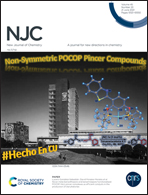High-sensitive detection of fluorene by ambient ionization mass spectrometry†
Abstract
A sensitive and rapid analysis of fluorene attracts increasing attention due to its effects on human health and its character of hard-to-degrade. However, an authentic approach is still limited. In this study, the dielectric barrier discharge ionization was coupled with nebulization (N-DBDI) to achieve the rapid and high sensitive analysis of fluorene. In N-DBDI, helium is used as the nebulization gas as well as discharge gas. This simplifies the configuration as well as operation. The operation parameters were optimized to obtain better sensitivity for fluorene analysis. In addition, the LOD and LOQ (0.64 and 2.12 ng L−1) overmatched with those obtained with other methods. Real water samples, which were sampled from river, rainwater at initial stage and drinking water, were analyzed. Satisfactory recoveries (93.00–103.71%) and RSDs (≤8.80%) were obtained. It was worth noting that the whole analysis process could be finished within 5 min. Furthermore, a possible mechanism for the high sensitivity of N-DBDI is proposed in detail with respect to collision and ion transmission efficiencies. Finally, the implication of N-DBDI was illustrated by analyzing three types of representative POPs, including PAHs, PCBs, OCPs, and mixture, which also illustrated the applicability of this method for the rapid detection of other POPs. This study makes environmental detectability of fluorene at sub-ng L−1 possible, and also represents a promising approach to detect other low-polar POPs in a rapid and sensitive manner.



 Please wait while we load your content...
Please wait while we load your content...